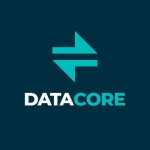We used Ceph as back-end storage for our internal cloud, based on OpenStack.
Our environment was a small open-source OpenStack cloud, on 10 Dell servers, each with two 1TB disks. We installed Ceph on each server to handle those disks and integrated OpenStack Cinder with Ceph to be used as cloud storage instances.
Scale out storage and storage redundancy.
Data redundancy, since it can survive failures (disks/servers). We didn’t lose our data or have a service interruption during server/disk failures.
Rebalancing and recovery are a bit slow.
One to three years.
I used it for about two years. We had no service interruption and no loss of data.
I have used (or know) the following distributed/shared file systems: Gluster, NFS, GFS2, and Ceph. For me, Ceph is one of the best.

















Yes, agree. What about capacity utilization? Can Ceph data redundancy easily achieve 80% usable?